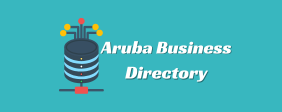When you invest in a professional logo What Is design, you’re not just paying for a pretty image — you’re investing in a comprehensive branding asset that represents your business across all platforms and mediums. A complete logo design package provides you with everything needed to consistently and effectively use your logo, whether online, in print, or on merchandise.
Here’s an in-depth look at what a typical complete logo design package includes, why each component matters, and how it benefits your brand’s identity and growth.
Multiple Logo Concepts What Is
A quality logo package usually starts with several unique logo concepts for you to review. Instead of just one option, designers provide multiple creative directions based on your brand brief. This gives you choices and helps clarify what style, tone, and imagery resonate best.
Why it matters: Offering several concepts ensures that your logo reflects your vision and brand personality.
What to expect: Typically, 3 to 5 distinct concepts, each with a different style or approach.
2. Revisions and Refinements
Once you select your favorite concept, designers include a set number of revision rounds to refine the logo based on your feedback. This could involve changes to colors, typography, spacing, iconography, or layout.
Why it matters: Revisions ensure your final logo how a t shirt design service helps build brand identity meets your expectations and accurately represents your brand.
What to expect: Usually 2-3 rounds of revisions are standard, with flexibility for more depending on the agreement.
3. Final Logo Files in Multiple Formats
A comprehensive package delivers your final logo in logo designs service a variety of file formats, ensuring versatility for any use:
Vector files (AI, EPS, SVG): These are scalable without loss of quality and essential for professional printing, large-format graphics, or future editing.
Raster files (PNG, JPEG): Commonly used for web, presentations, or digital documents.
High-resolution and web-optimized versions: For sharp display on websites and social media.
Black and white, grayscale, and reversed (white on dark) versions: To maintain legibility and impact in different contexts.
Why it matters: Multiple formats guarantee marketing list your logo can be used across all mediums, from tiny app icons to huge billboards, without quality loss.
What to expect: At minimum, you’ll receive AI or EPS (vector), PNG with transparent background, and JPEG files.
Color Variations What Is
A complete package includes several color versions of your logo:
Full-color version: Your primary logo in brand colors.
Black version: For single-color printing or minimal designs.
White/reverse version: For placing your logo on dark backgrounds.
Grayscale version: Useful for documents or print where color isn’t possible.
Why it matters: Different situations call for different color uses, so having all variations ready keeps your brand consistent and adaptable.
What to expect: At least these four variations to cover most use cases.
Logo Usage Guidelines / Brand Style Guide What Is
A professional logo package often comes with a basic style guide or usage guidelines document, which outlines:
Color specifications: Exact color codes (Pantone, CMYK, RGB, HEX) to maintain consistency.
Typography guidelines: Fonts to use alongside your logo.
Incorrect uses: Examples of what NOT to do with the logo (e.g., stretching, changing colors, adding shadows).
Application examples: How the logo should appear on business cards, websites, merchandise, etc.
Why it matters: Guidelines protect your brand’s integrity and ensure your logo always looks professional and consistent, regardless of who uses it.
What to expect: A PDF or digital document covering key logo usage principles.
Logo Variations and Layout Options
Many logo packages include different layout options to suit various applications:
Primary logo: The main version you’ll use most often.
Icon or symbol-only version: A simplified mark or emblem that can be used for social media avatars, app icons, or favicons.
Horizontal and vertical layouts: For flexible placement depending on space constraints.
Monogram or lettermark versions: Sometimes included if relevant to your brand name.
Why it matters: Different formats give you flexibility to adapt your to any platform or material without losing brand recognition.
What to expect: Multiple lockups optimized for web, print, and social media.
Additional Brand Assets (Optional but Valuable)
Some design packages offer extras to complement your new brand identity:
Business card design: Matching business cards to create a cohesive brand experience.
Social media profile and banner templates: Ready-to-use graphics that keep your brand consistent online.
Favicon: A tiny version of your optimized for browser tabs.
Stationery templates: Letterheads, envelopes, and email signatures.
Brand pattern or textures: Design elements that can be used alongside your .
Why it matters: These extras help you apply your new consistently across all touchpoints, strengthening your brand presence.
What to expect: Available as add-ons or premium packages depending on your needs.
Ownership and Copyright
A crucial part of a professional package is the transfer of ownership rights:
Full copyright and commercial use rights: You get legal ownership of the design once the project is complete and paid for.
No restrictions: You’re free to use your on any product, platform, or marketing material.
Why it matters: Clear ownership rights avoid legal issues and let you use your without limitation.
What to expect: Written confirmation in your contract or agreement.
Support and Future Assistance
Many designers offer ongoing support or optional future services:
Help with file formats or applications: Guidance on how to use your logo files.
Additional formats or edits: Minor tweaks or new versions for evolving needs.
Brand extensions: Designing related visuals like social media graphics or packaging.
Why it matters: Your brand needs may grow over time, and having access to your designer ensures your logo evolves smoothly.
What to expect: Often available as hourly or project-based services after the initial delivery.
Conclusion
A complete design package is much more than just a pretty image — it’s a toolbox for building a strong, consistent brand identity. From initial concepts and revisions to versatile file formats, color variations, and usage guidelines, a comprehensive package equips you with everything needed to showcase your brand professionally and cohesively.
